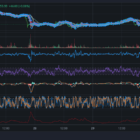Ethereum Co-Founder Vitalik Buterin Reassures Community on Layer 2 Network Security Concerns
In the fast-paced world of cryptocurrency, security is paramount. And when it comes to Ethereum, one of the most influential blockchain platforms, this concern is even more critical. Recently, there has been a buzz on social media regarding the security of major Layer 2 (L2) networks, particularly about whether they can unilaterally steal user funds. These concerns stem from the increasing reliance on L2 solutions to scale Ethereum, and users are naturally worried about the potential risks involved. But fear not! Vitalik Buterin, Ethereum’s co-founder, has stepped in to address these concerns head-on. Let’s dive into what he had to say and why you should feel more at ease about your crypto holdings.
Understanding Layer 2 Networks and Why They Matter
Before we delve into Vitalik’s reassurances, it’s essential to understand what L2 networks are and why they are so crucial to Ethereum’s future. Imagine Ethereum as a bustling city. As more people move in, the streets (or the blockchain) get crowded, and traffic (transactions) slows down. Layer 2 solutions are like building an efficient subway system beneath the city, allowing more people to move quickly without clogging the streets above.
L2 networks help Ethereum scale by processing transactions off-chain and then recording them on the main Ethereum blockchain (Layer 1 or L1). This process significantly reduces congestion on the main network, lowers transaction fees, and improves speed. Popular L2 solutions include Optimism, Arbitrum, and zk-Rollups, each with its own method of scaling and securing transactions.
But with great power comes great responsibility. As L2 networks handle more transactions, the question of who controls these networks and how secure they are becomes increasingly important.
The Social Media Stir: Can L2 Networks Steal Your Funds?
Recently, social media has been abuzz with questions about the security of L2 networks. The core of the concern is whether these networks, or the companies behind them, could unilaterally decide to take control of user funds. The thought is terrifying: Imagine waking up one morning to find that your hard-earned Ethereum or other tokens have been swept away by an unseen hand.
These fears aren’t entirely unfounded. L2 networks operate differently from the main Ethereum blockchain, which is known for its decentralized and trustless nature. L2 solutions, while still secure, often have a different set of rules and governance structures, which led to concerns about whether these structures could be exploited.
Vitalik Buterin to the Rescue: Security Council and Voting Thresholds
Enter Vitalik Buterin, Ethereum’s very own superhero, ready to calm the storm. In a recent statement, Vitalik addressed these concerns with clarity and precision. He explained that the security architecture of major L2 networks, such as Optimism and Arbitrum, is designed in such a way that it would be technically impossible for them to steal user funds unilaterally.
So, how does this work? Vitalik pointed out that any significant changes to the L2 networks require a 75% voting threshold by the security council. This means that even if someone wanted to make a drastic change, they would need to convince a supermajority of the council to agree. This rule alone adds a layer of protection, ensuring that no single entity can have undue influence over the network.
But there’s more. Vitalik emphasized that at least 26% of the security council members must be external to the company that runs the L2 network. This requirement further decentralizes control, ensuring that the decision-making process is not just in the hands of the developers or the company behind the L2 solution. Instead, it involves a broader community of stakeholders, making it even harder for any single party to act unilaterally.
Why You Shouldn’t Lose Sleep Over L2 Security
Let’s break this down into simpler terms. Imagine you’re part of a homeowners’ association (HOA) in a large neighborhood. The HOA decides on rules like whether you can paint your house purple or build a swimming pool in your backyard. Now, what if one person in the HOA wanted to impose a crazy rule like banning all swimming pools? They’d need to get three-quarters of the other homeowners to agree. Plus, at least a quarter of the HOA members have to be people who don’t even live in the neighborhood, ensuring a fair and unbiased decision-making process.
This is essentially how the security council works for L2 networks. It’s designed to make sure that no one can make major changes without broad and diverse support. This setup makes it virtually impossible for any single entity to take control or steal funds. It’s like having multiple locks on your front door, each with a different key held by different trusted people.
The Compliance of Optimism and Arbitrum
Vitalik also reassured the community that major L2 networks like Optimism and Arbitrum already comply with these stringent requirements. These networks have implemented the 75% voting threshold and ensured that 26% of the security council members are external. This compliance isn’t just a checkbox; it’s a critical component of their security architecture that protects user funds.
Optimism, for example, is known for its focus on governance and security. They’ve built a robust system that not only scales Ethereum but does so in a way that prioritizes the safety of user assets. Arbitrum, on the other hand, has been a frontrunner in the L2 space, consistently delivering secure and scalable solutions. Their adherence to these security protocols further cements their reputation as trustworthy platforms.
What Does This Mean for You?
If you’re an Ethereum user or a crypto enthusiast, Vitalik’s explanation should bring you a sigh of relief. The concerns about L2 networks being able to steal funds unilaterally have been thoroughly addressed. The architecture of these networks is built with security at its core, ensuring that your assets remain safe.
However, it’s also a reminder to stay informed and vigilant. While L2 networks are designed to be secure, the crypto space is ever-evolving. New developments, upgrades, and challenges will continue to emerge. As a participant in this space, it’s crucial to keep up with the latest information and understand the technology behind the platforms you use.
The Future of Ethereum and Layer 2 Solutions
Looking ahead, Layer 2 solutions will play an increasingly vital role in Ethereum’s ecosystem. As Ethereum continues to scale and more users flock to the network, L2 solutions will be the key to maintaining efficiency, reducing costs, and ensuring that the network remains accessible to all.
Vitalik’s reassurances about the security of these networks are a strong vote of confidence in their future. They show that the Ethereum community is not just focused on scaling but on doing so in a way that is secure and trustworthy.




